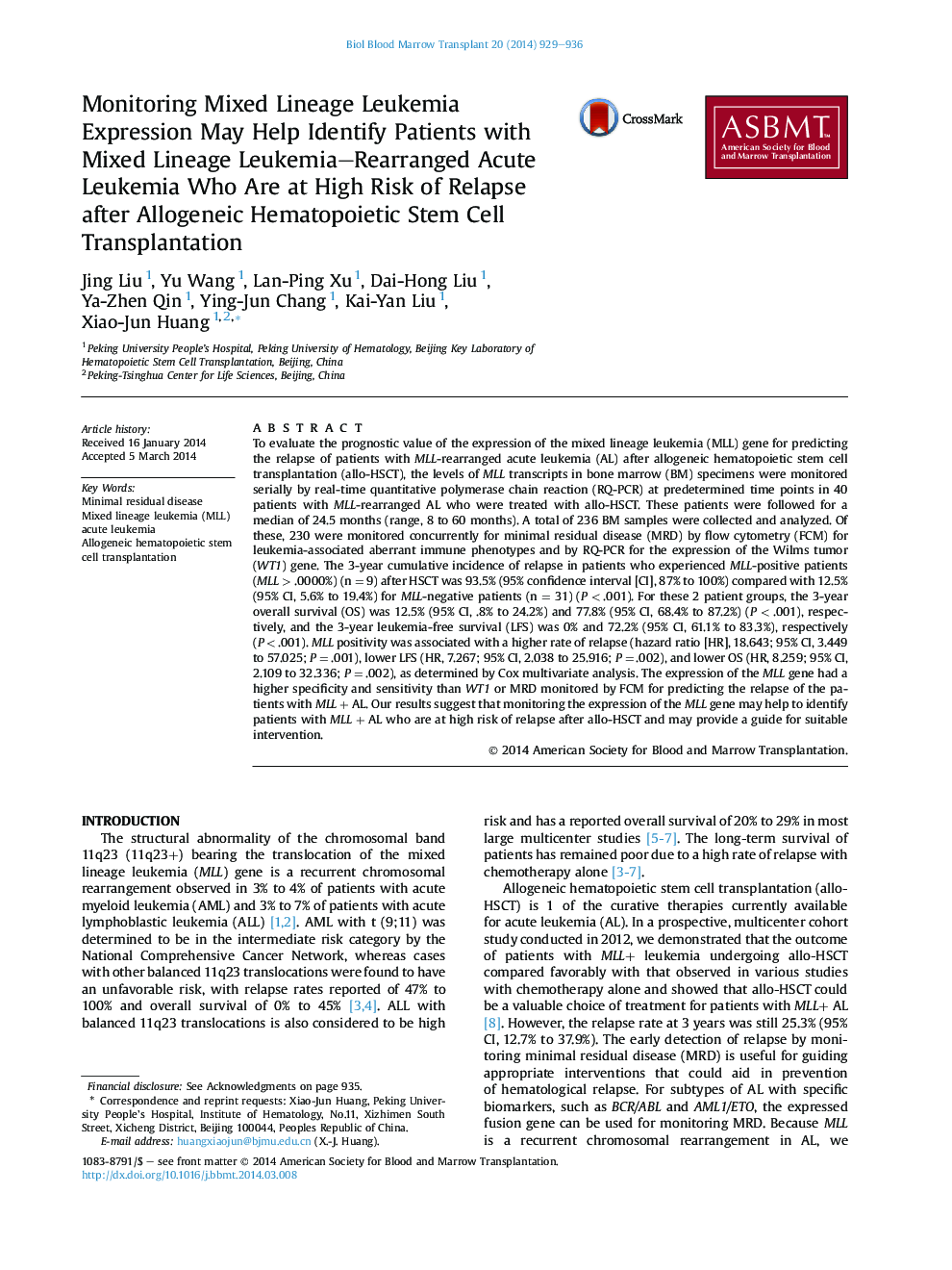| Article ID | Journal | Published Year | Pages | File Type |
|---|---|---|---|---|
| 2102305 | Biology of Blood and Marrow Transplantation | 2014 | 8 Pages |
To evaluate the prognostic value of the expression of the mixed lineage leukemia (MLL) gene for predicting the relapse of patients with MLL-rearranged acute leukemia (AL) after allogeneic hematopoietic stem cell transplantation (allo-HSCT), the levels of MLL transcripts in bone marrow (BM) specimens were monitored serially by real-time quantitative polymerase chain reaction (RQ-PCR) at predetermined time points in 40 patients with MLL-rearranged AL who were treated with allo-HSCT. These patients were followed for a median of 24.5 months (range, 8 to 60 months). A total of 236 BM samples were collected and analyzed. Of these, 230 were monitored concurrently for minimal residual disease (MRD) by flow cytometry (FCM) for leukemia-associated aberrant immune phenotypes and by RQ-PCR for the expression of the Wilms tumor (WT1) gene. The 3-year cumulative incidence of relapse in patients who experienced MLL-positive patients (MLL > .0000%) (n = 9) after HSCT was 93.5% (95% confidence interval [CI], 87% to 100%) compared with 12.5% (95% CI, 5.6% to 19.4%) for MLL-negative patients (n = 31) (P < .001). For these 2 patient groups, the 3-year overall survival (OS) was 12.5% (95% CI, .8% to 24.2%) and 77.8% (95% CI, 68.4% to 87.2%) (P < .001), respectively, and the 3-year leukemia-free survival (LFS) was 0% and 72.2% (95% CI, 61.1% to 83.3%), respectively (P < .001). MLL positivity was associated with a higher rate of relapse (hazard ratio [HR], 18.643; 95% CI, 3.449 to 57.025; P = .001), lower LFS (HR, 7.267; 95% CI, 2.038 to 25.916; P = .002), and lower OS (HR, 8.259; 95% CI, 2.109 to 32.336; P = .002), as determined by Cox multivariate analysis. The expression of the MLL gene had a higher specificity and sensitivity than WT1 or MRD monitored by FCM for predicting the relapse of the patients with MLL + AL. Our results suggest that monitoring the expression of the MLL gene may help to identify patients with MLL + AL who are at high risk of relapse after allo-HSCT and may provide a guide for suitable intervention.
